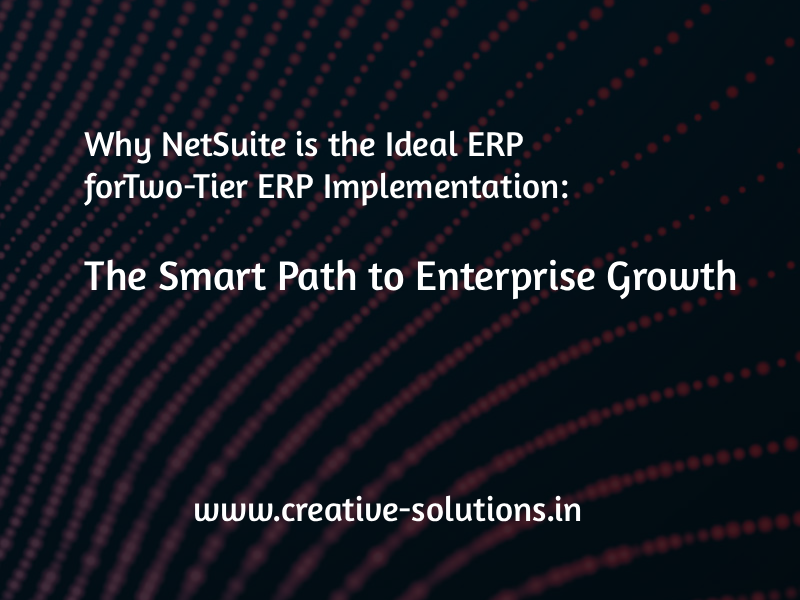In today’s rapidly evolving business landscape, growing companies face a critical dilemma: stick with their legacy ERP systems and risk operational inefficiencies, or undertake a complete system overhaul that could disrupt business continuity. Enter the two-tier ERP strategy – a game-changing approach that’s transforming how enterprises manage their technology infrastructure.
What is Two-Tier ERP? (And Why It’s Brilliant)
Think of two-tier ERP as having the best of both worlds. Your corporate headquarters maintains its robust, established ERP system (Tier 1), while subsidiaries, divisions, or new business units operate on a more agile, cloud-based solution (Tier 2). It’s like having a luxury sedan for long highway drives and a nimble sports car for city navigation – each perfectly suited for its purpose.
This approach allows companies to:
- Preserve existing investments in their core ERP infrastructure
- Enable rapid expansion without the complexity of full system migrations
- Maintain centralized financial control while allowing operational flexibility
- Reduce implementation time and costs significantly
Why NetSuite Dominates the Tier 2 Space
1. Cloud-Native Architecture That Actually Works
Unlike traditional ERPs retrofitted for the cloud, NetSuite was born in the cloud. This means:
- Zero infrastructure headaches – no servers, no maintenance, no IT nightmares
- Automatic updates that don’t break your customizations
- Global accessibility for your distributed teams
- Scalability that grows with your ambitions
2. Integration Capabilities That Bridge the Gap
The magic of two-tier ERP lies in seamless integration, and NetSuite excels here:
- Pre-built connectors for major Tier 1 systems like SAP, Oracle, and Microsoft Dynamics
- Real-time data synchronization for financial consolidation
- RESTful APIs that make custom integrations straightforward
- SuiteCloud platform for building bespoke integration solutions
3. Financial Consolidation Made Simple
CFOs love NetSuite for two-tier implementations because:
- Multi-subsidiary management with automated consolidation
- Real-time financial reporting across all entities
- Currency handling for global operations
- Compliance capabilities that satisfy both local and corporate requirements
Real-World Success Stories
Manufacturing Giant’s Expansion: A Fortune 500 manufacturer used NetSuite for its 15 international subsidiaries while maintaining SAP at headquarters. Result? 60% faster implementations and 40% reduction in total cost of ownership.
Retail Chain’s Digital Transformation: A traditional retailer implemented NetSuite for its e-commerce division while keeping their legacy system for physical stores. The two-tier approach enabled them to compete digitally without disrupting their core operations.
The Implementation Sweet Spot
NetSuite shines in two-tier scenarios for:
Growing Subsidiaries
- Rapid deployment (weeks, not years)
- Lower upfront investment
- Scalable licensing model
New Business Units
- Modern functionality out-of-the-box
- Agile business processes
- Innovation-friendly platform
Acquired Companies
- Quick integration without forced migrations
- Preserved operational independence
- Streamlined financial reporting
Overcoming Common Concerns
“But what about data consistency?”
NetSuite’s integration capabilities ensure data flows seamlessly between tiers, with real-time synchronization and automated reconciliation.
“Will this create more complexity?”
Actually, the opposite. Two-tier ERP reduces complexity by allowing each system to focus on what it does best, while NetSuite handles the heavy lifting for newer operations.
“What about total cost of ownership?”
Studies show two-tier implementations typically cost 30-50% less than full ERP replacements, with faster ROI realization.
The Strategic Advantage
Companies implementing NetSuite in a two-tier architecture gain:
- Competitive Agility – Respond to market changes without corporate system constraints
- Innovation Acceleration – Leverage modern capabilities while preserving core investments
- Risk Mitigation – Minimize disruption to critical business operations
- Future Flexibility – Create options for eventual full migration or continued hybrid operation
Making the Move: Your Next Steps
The two-tier ERP strategy with NetSuite isn’t just about technology – it’s about business transformation. Here’s how to get started:
- Assess your current landscape – Identify which operations would benefit most from modernization
- Define integration requirements – Map data flows between your systems
- Pilot with a subsidiary or new division – Prove the concept before broader rollout
- Plan for success – Establish governance and success metrics
The Bottom Line
In an era where business agility determines market success, two-tier ERP implementation with NetSuite offers the perfect balance of stability and innovation. It’s not about choosing between old and new – it’s about strategically combining both to create a competitive advantage.
Your legacy ERP brought you this far. NetSuite as your Tier 2 solution will take you to the next level. The question isn’t whether two-tier ERP is right for your growing business – it’s how quickly you can implement it to stay ahead of the competition.
Ready to explore how NetSuite can transform your two-tier ERP strategy? The future of enterprise resource planning is here, and it’s more accessible than you think.
Looking to implement NetSuite for your two-tier ERP strategy? Connect with us



